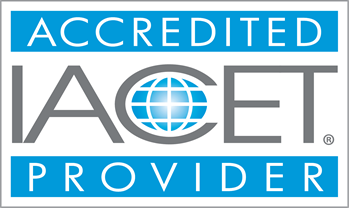Price: $99.99
OSHA-40-Hour HAZWOPER
The 40-hour HAZWOPER training prepares emergency response and cleanup workers to work safely during a number of situations involving hazardous materials. This safety training program covers policies, procedures, and practices that decrease the risk of illness and injury caused by exposure to harmful substances on the worksite.Students will gain competency in the following areas: How to implement the employer's emergency response plan; Know the classification, identification and verification of known and unknown materials; Be able to function within an assigned role in the Incident Command System; how to select and use proper specialized chemical personal protective equipment; Understand hazard and risk assessment techniques; Be able to perform advance control, containment, and/or confinement operations; Understand and implement decontamination procedures; Understand termination procedures; and understand basic chemical and toxicological terminology and behavior.
Course Modules - (26)
Workers are required to follow the OSHA 29 CFR 1910.120
requirements for hazardous waste operations and emergency response (HAZWOPER)
while they are cleaning up, treating, storing, or disposing of hazardous
chemicals as those terms are outlined in 49 CFR 171.8 and 40 CFR 261.3. There
are major hazards associated with not understanding and adhering to these
requirements, including the possibility of chemical burns, eye and skin
irritation, and perhaps death. Our 40-hour HAZWOPER course assists employees,
managers, as well as supervisors in achieving initial compliance to uphold a
safe workplace and reduce health hazards.
You will receive a certificate of completion at the end of the course, which you can download right away. As evidence of your training, you may provide your employer with a certificate, and you can download photocopies at any time for your personal use.
Who Needs Our OSHA-40-Hour HAZWOPER Training?
The
majority of employees who are not familiar with emergency response procedures
or uncontrolled hazardous waste must enroll in our 40-hour HAZWOPER training.
This covers supervisors and management present on the job site, as well as
general site employees like laborers and machinery operators.
Individuals
who need this safety training are:
●
General laborers
●
Other general site workers
●
Equipment operators
● On-site
supervisory and management personnel
The
40-hour training is intended for those who are most at risk of exposure at
work. Employees and managers who are not frequently on site are less likely to
be subjected to the above allowable exposure limits, so just 24 hours of
HAZWOPER training is appropriate.
Learning Outcomes:
- Estimate the Size of a HAZMAT Endangered Area.
- Survey Hazardous Material Incidents at the HAZWOPER Level.
- Collect Hazard and Response Information at the HAZWOPER Level.
- Determine the Potential Harm of a Hazardous Material.
- Identify Personal Protective Equipment (PPE) Safety Precautions.
- Identify and Select Personal Protective Equipment (PPE).
- Identify Decontamination Methods.
- Advise On-Scene Control Measures.
- Develop a Plan of Action for a Hazardous Material Incident.
- Identify the Incident Management System (IMS).
Completion Requirements:
- 100% appearance for the course
- Fully involvement in all class trainings (determined by instructor)
- Completion of Continuing Education and Training Registration Form
- Completion of mandatory quiz assessments
- As applicable, attainment of least passing score on required end-of-course examination
- Participation and submittal of end-of-course assessment form (must provide name on form to obtain credit)
Benefits of Our OSHA-40-Hour HAZWOPER Training
There’s a long list of
benefits that one will have after completing this OSHA-40-Hour HAZWOPER
training. Some of them are listed below.
●
Thorough understanding of hazardous waste
operations and emergency response.
●
Adherence to OSHA guidelines guaranteeing a
more secure workplace.
●
Better response and preparedness for
emergencies.
●
A lower chance of injuries and accidents at
work.
●
Greater assurance and proficiency among
workers managing hazardous materials.
So, what are you waiting
for? Get enrolled in our OSHA-40-Hour HAZWOPER training today for a better and
safer workplace environment!


